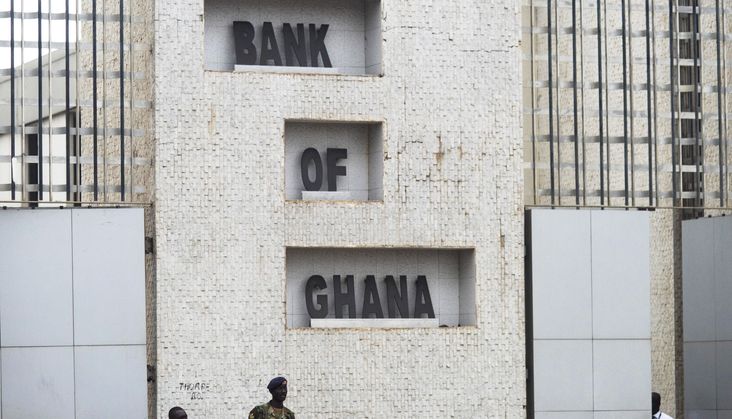BoG Pegs Policy Rate At 17%

The Bank of Ghana (BoG) has increased the Monetary Policy Rate (MPR) to 17% from 14.5%.
This is 250 basis points, BoG says.
Additionally, the Bank of Ghana says “effective April 1, 2022, it will enforce the following measures in relation to universal banks: The Cash Reserve Ratio is increased to 12 percent; The Capital Conservation Buffer is reset to the pre-pandemic level of 3 percent, making the Capital Adequacy Ratio a total of 13 percent; and The provisioning rate for loans in the Other Loans Exceptionally Mentioned (OLEM) category is reset to the pre-pandemic level of 10 percent.”
The new policies were announced after the 105th meeting was held earlier than planned, by the Monetary Policy Committee (MPC).
The MPC says it is confident that ongoing discussions will lead to very decisive policy reforms that will address underlying fiscal mismatches and restore some calm in the markets.
This, BoG says, together with the monetary policy decision and additional measures, should help re-anchor inflation expectations.
Ghana is plunged into an economic downturn as the cedi keeps depreciating, inflation rate keeps soaring, and prices of fuel keep sky-rocketing.
BoG noticed that “The Sovereign credit rating downgrades of Ghana by Fitch and Moody’s led to widened yield spreads on both cedi-denominated Government of Ghana bonds and the country’s Eurobonds. These downgrades reflect market and investor concerns about fiscal and debt sustainability.
“Consequently, the Ghana Cedi has come under severe pressure as offshore investors exited positions in domestic securities at a time when domestic demand for forex has increased, reflecting both real and speculative demand.
“This has caused the exchange rate to overshoot its long-term trend. The strengthening of the US dollar, liquidity pressures, uncertainties regarding budget implementation, portfolio reversals by nonresidents and some speculative pressures are key contributory factors.”
Despite all these, Ghana’s central bank observes that Domestic growth conditions are fairly strong.
“The steady increase in private sector credit growth has continued with positive growth implications. Banking sector performance remains strong, with sustained growth in total assets, investments, and deposits.
“Key financial soundness indicators such as profitability, liquidity, and solvency remain healthy. Asset quality improved slightly, although there are upside risks to the outlook, requiring continued monitoring to address early signs of stress within the sector.”
Source: opemsuo.com/Hajara Fuseini








